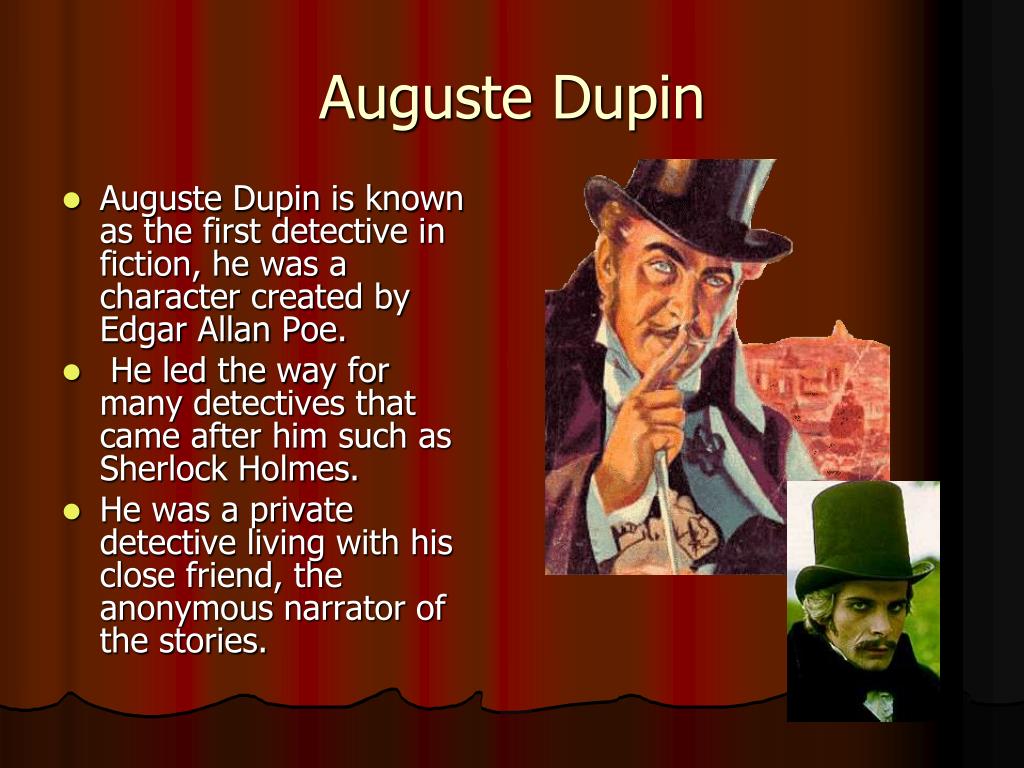
Dupin himself reappears in " The Mystery of Marie Rogêt" and " The Purloined Letter". Many later characters, for example, follow Poe's model of the brilliant detective, his personal friend who serves as narrator, and the final revelation being presented before the reasoning that leads up to it. At the murder scene, Dupin finds a hair that does not appear to be human.Īs the first fictional detective, Poe's Dupin displays many traits which became literary conventions in subsequent fictional detectives, including Sherlock Holmes and Hercule Poirot. Numerous witnesses heard a suspect, though no one agrees on what language was spoken. Auguste Dupin is a man in Paris who solves the mystery of the brutal murder of two women. It has been described as the first modern detective story Poe referred to it as one of his "tales of ratiocination". " The Murders in the Rue Morgue" is a short story by Edgar Allan Poe published in Graham's Magazine in 1841. Tales (Poe)/The Murders in the Rue Morgue at Wikisource Carnes, eds., American National Biography, New York: Oxford University Press, 1999 Wilson, Charles Reagan and William Ferris, eds., Encyclopedia of Southern Culture, Chapel Hill, NC: University of North Carolina Press, 1989.Facsimile of Poe's original manuscript for "The Murders in the Rue Morgue" See also the entry for Edgar Allan Poe from the Encyclopedia of Southern Culture available on this site. The clever Dupin again aids the Parisian police in "The Mystery of Marie Rogêt" and "The Purloined Letter."

As Poe's unnamed narrator recounts, Auguste Dupin, through his analytical genius, solves the grisly murder cases of Madame L'Espanaye and her unfortunate daughter. Set in Paris, "The Murders in the Rue Morgue," first published in April 1841 in Graham's Magazine, introduces Poe's famous detective figure, C. In terms of popular literature, Tales also includes three narratives now considered the foundation of modern detective fiction. To a certain degree, all examine what Poe reveals as the psychological undercurrents that pervade human existence. These twelve tales contain a range of subjects and settings, from the gloomy mansions and nightmarish terrors of "The Fall of the House of Usher" to the desolate Norwegian coast with its frighteningly fantastic elements in "A Descent into the Maelstrom." Characters populating these stories suffer from mysterious illnesses and maladies, frequently slip into philosophical musings, and often remain obsessed with the horrors of death and the supernatural. Published in 1845, Poe's Tales marked his second collection of short stories, a literary form many critics credit him with establishing. Plagued by emotional instability, compulsive drinking, and occasional lapses into poverty, Poe endured a somewhat tumultuous short life, dying in Baltimore on October 7, 1849.


Ultimately disinherited by his foster father, Poe - even while composing his fiction and poetry - supported himself financially as a journalist, working and writing for magazines such as the Southern Literary Messenger and the Broadway Journal, among others. Consequently, Poe was raised as the foster son of a Richmond, Virginia tobacco merchant, John Allan, with whom he later had an uneasy, conflict-ridden relationship. Born in Boston, Massachusetts in 1809, Edgar Allan Poe was abandoned by his father and was orphaned before the age of three.


 0 kommentar(er)
0 kommentar(er)
